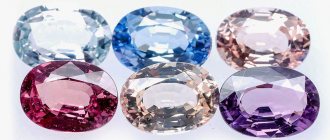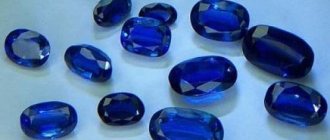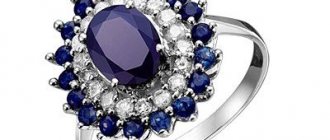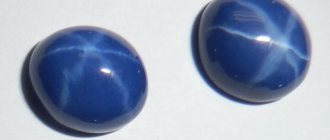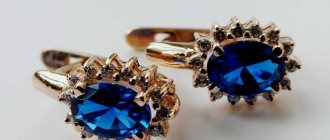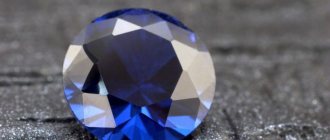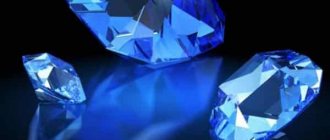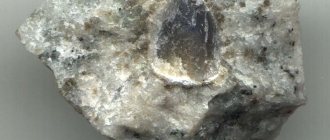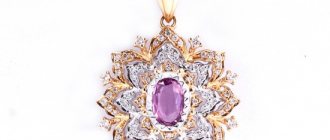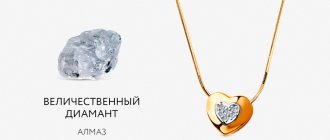“The moon has not yet risen, but the stars have already begun to appear.
There were a lot of them. They sparkled all over the sky
like diamond dust and sapphire fragments"
Neil Gaiman (Smoke and Mirrors).
Precious stones, including sapphires, are often compared to stars. Indeed, gems, like stars, have an eye-catching brilliance and depth. Looking at them, you want to think about something distant and unknown. Imagine the night, a scattering of stars overhead. How many of them can you name? I think a few of the largest and brightest. Since our school days we have heard about Sirius, Arcturus, Vega, Betelgeuse. And, undoubtedly, everyone will be able to point to the North Star in the sky.
Millennium Sapphire – description
The “Millennium Sapphire” gemstone is rightfully considered the North Star of the sapphire world.
This is a melon-sized nugget, on which, by the hand of the skilled Italian artist Alessio Boschi, the most important events of human history are carved, from the construction of the pyramids to the landing of Neil Armstrong on the moon. Looking carefully at the figures depicted on the surface of the stone, one can distinguish in them William Shakespeare, Ludwig van Beethoven, Albert Einstein, Christopher Columbus, Isaac Newton and others. The Millennium Sapphire weighs 61.5 thousand carats. This is the largest known sapphire. It is listed in the Guinness Book of Records. The Millennium Sapphire was found in Madagascar and weighed almost 90 thousand carats before cutting. After processing, it lost a little less than a third of its weight, which is rare since stone processing usually tries to maintain as much weight as possible. But despite such losses, the value of the Millennium Sapphire after processing increased many times. The gem is currently located in Hong Kong, China.
History of the stone
The term “sapphire” goes back to the Babylonian “sipra”, which means “scratching”.
This name could be due to the extraordinary strength of the mineral. Ancient Greek also has a similar word, which is written as "sappheiros". Scientists point out that in Greece this was the name for any blue mineral. In Kievan Rus, sapphires were known for a long time as “azure yachts.” — Advertising —
For a long time, sapphires meant all stones colored in shades of blue, such as lapis lazuli. And only in the 18th century, the chemist G. Vallerius from Sweden made a proposal to call only transparent blue corundums sapphires. In modern mineralogy, sapphires are corundums of any shade except red, for which the name rubies is assigned.
Today, cornflower blue sapphires (Kashmiri, Burmese, Ceylon types) are considered the most valuable. Gems from Australia and Kenya have a green tint and are less valuable. A particularly interesting variety is the star natural blue sapphire. But blue sapphires have remained the most popular and famous for many centuries in a row. They decorated the crowns of rulers in Great Britain, Russia, and the Netherlands. The rich and famous have always loved sapphire pieces, be it a brooch, necklace, choker, bracelet, earrings or ring. Probably the most famous piece of sapphire jewelry today is Princess Diana's engagement ring, which Britain's Prince William gave to his fiancée Kate Middleton.
Lone Star
The largest among the group of star-type sapphires (in another way with the effect of asterism) is considered to be “Lone Star”. This type of sapphire contains clusters of titanium dioxide in its structure. Outwardly, this is manifested in the formation of shine in the form of a six-rayed star on the surface of the gem. There are no authentic photographs of the Lone Star available online. The man who found this sapphire, and also its owner, Harold Roper, stumbled upon it in the mountains of Carolina. He does not want to sell the stone and does not publish a photo of the stone. It is only known that the gem has a rich blue tint and a strong star effect. "Lone Star" weighs 9,719 carats.
"Raspoli", 135 carats
The Ruspoli sapphire is still uncut and belongs to the collection of the Paris Botanical Garden (Jardin des Plantes). The stone received its name in honor of the Ruspoli family - wealthy Romans, one of the many owners of sapphire. After changing several owners, the stone finally fell into the hands of a jeweler, who sold it to the Botanical Garden Museum. The Ruspoli sapphire has a brown tint, but is most notable for the fact that it has absolutely no flaws - and for natural sapphires this quality is simply unique.
Estimation, cost of the largest sapphires in the world
The Star of India is the largest sapphire, weighing 563 carats, which was found in Sri Lanka.
It is kept in the American Museum of Natural History, New York, USA. The gem previously belonged to the famous banker John Morgan, who donated the stone to the museum. The Star of India, like the Lone Star, is a star sapphire. The star effect appears on both sides of the stone. It is known that one day a sapphire was stolen and disappeared for three years. After this time, the stone was noticed in the bus station, in a storage room, and was soon returned to the museum. One of the most expensive sapphires is “
Black Star of Queensland
, which also belongs to the type of star sapphires. This is a gem with an interesting story. It was discovered in Queensland, Australia, by a twelve-year-old boy, Roy Spencer. Roy's father, Harry Spencer, did not imagine that there were sapphires in the world other than blue shades and did not attach any value to the nugget. It so happened that the stone was the right size to prop up the door of the Spencers’ house. The future “Black Star” performed this type of work for about ten years. Eventually, Harry Spencer learned about the existence of black sapphires and earned a good amount of money by selling the stone to his namesake, jeweler Harry Kazanjian. The jeweler carefully studied the nugget for two months and finally decided to cut it into a cabochon. Kazanjian's masterful hands transformed the sapphire into the 733-carat Black Star of Queensland. “Black Star” turned out to be unusual not only in its color. The gemstone is also notable for its rare form of asterism. Typically, an asterism forms on the surface three straight rays intersecting in the center, which reach the edge of the stone. The rays of the “Black Star” are wide, narrow at the ends and, in addition, have different lengths, but none of the rays reaches the outskirts of the sapphire. The center of the radial star is brighter and larger than is usually the case. For added effect, the Black Star was set in white gold and complemented by a group of diamonds that enhance the brilliance of the sapphire.
INTERESTING FACT. Cabochon (from the French caboche - head) is a special technology for processing semi-precious stones, in which they acquire a rounded shape that has no edges. Gems that have some kind of optical effect are processed in this way. For example, star formation in the case of sapphires.
Do not think that only the number of carats gives a stone its value. The St. Edward sapphire is not large compared to the gemstones described above.
It weighs only 167 carats, but at the same time crowns the Crown of the British Empire. The stone is distinguished by an unusual dark blue hue, which is emphasized by its cut in the shape of a rose flower. Now you can admire the beauty of the sapphire and the Crown of the British Empire as a whole in the exhibition of the Tower of London. There is a legend that the sapphire ring belonged to King Edward the Confessor of Britain. He was a very generous and merciful man. One day, on the way to the chapel, he met a beggar and gave him a ring, since he no longer had anything valuable with him. After some time had passed, the pilgrims, subjects of the crown, returned the ring to their king and told an interesting story. It was as if they were caught in a storm, but the pilgrims were lucky enough to meet an old man who gave them shelter and fed them. This elder called himself John the Evangelist and ordered the pilgrims to repay for their salvation by handing over the sapphire to King Edward with the words that Saint John would wait for the King of Britain in Paradise. Having received such news, the king soon left the earthly world, and a hundred years later he was canonized.
The St Edward's Sapphire is now listed as a Crown Jewel and is carefully inspected by the court jewelers for restoration every winter.
Place of Birth
Sapphires of high quality and extraordinary beauty are mined in Sri Lanka, Madagascar, India, Thailand, Burma, Australia and Brazil. Indian gems, which are characterized by velvety texture and a color similar to cornflower (Kashmir deposit), are usually valued more than others. This variety is considered the most valuable and expensive, but the reserves of this deposit, unfortunately, have been greatly reduced recently.
Colors
The main color for sapphire is blue, although in fact the color palette of this mineral is very wide and includes all shades except red (red corundum is traditionally called ruby). The standard for blue sapphires are samples that are mined in Kashmir (India). They are cornflower blue, velvety, sometimes covered with a light milky haze. Crystals from other deposits may be lighter in color.
Medicinal properties
In ancient times, sapphires were used to treat eye diseases.
They were believed to help with leprosy and other skin diseases and have antidote properties. Indian Ayurveda recommends sapphire for neuralgia, epilepsy, hysteria, and sciatica. Modern lithotherapy uses sapphires for insomnia, back pain, colds, bronchial asthma, heart disease and oncology. The mineral has a good effect on the body in case of diabetes, kidney disease and hypertension.
Magic properties
The sapphire mineral is a symbol of fidelity, chastity and modesty; it gives its owner happy love, helps in finding the purpose of life, overcoming all passions, fears and depression, gaining spiritual comfort, tranquility, and prudence.
Sapphire is a good protector against betrayal and fear, gossip and slander, slander and the evil eye. The mineral will give determination and courage to an insecure person. It is believed that sapphire is an energetically very powerful stone, and influences a person in such a way that it reveals and stimulates the development of his best qualities, and eliminates everything base and evil. It stimulates creativity, awakens an extraordinary emotional perception of life, but thoughts remain clear and memory improves.
With the help of sapphire it is much easier to concentrate power and develop higher spirituality and concentration. For this reason, the mineral is known as the "nun's stone."
Sapphire allows any energy to pass through itself, while purifying it and transmitting it to its owner. This is why it is so popular for use in meditation, where star patterns are recognized as the most powerful. The three or six rays that intersect in the cut stone are symbols of the magical numbers 3 and 6, and are considered associated with faith, hope and love.
To be used for magical purposes, a sapphire specimen must be of very high quality, since a stone with defects can cause misfortune.
Physico-chemical characteristics
Sapphire is a precious variety of corundum.
Chemically, it is aluminum oxide. It can be painted in a variety of colors: shades of blue, light blue, pink, yellow, green, red-orange, purple. Pure aluminum oxide is colorless, and the color of sapphires is due to the presence of inclusions, including titanium, chromium, manganese, iron, and vanadium. Sapphire crystals have a glassy luster, trigonal structure and conchoidal fracture. They have no cleavage and are very strong and hard, they can be either transparent or opaque,
— Advertising —
The light refraction is 1.766-1.774. Hardness on the Mohs scale 9. Specific gravity 4.0 g/cm3.
